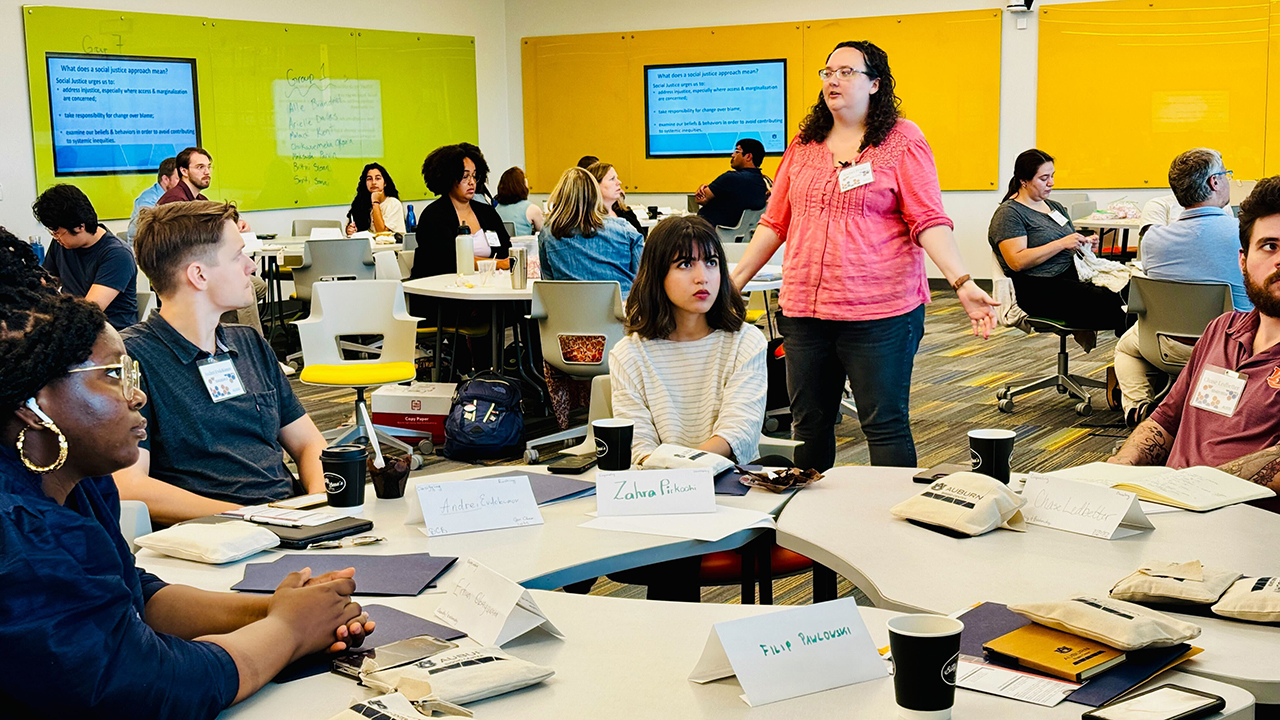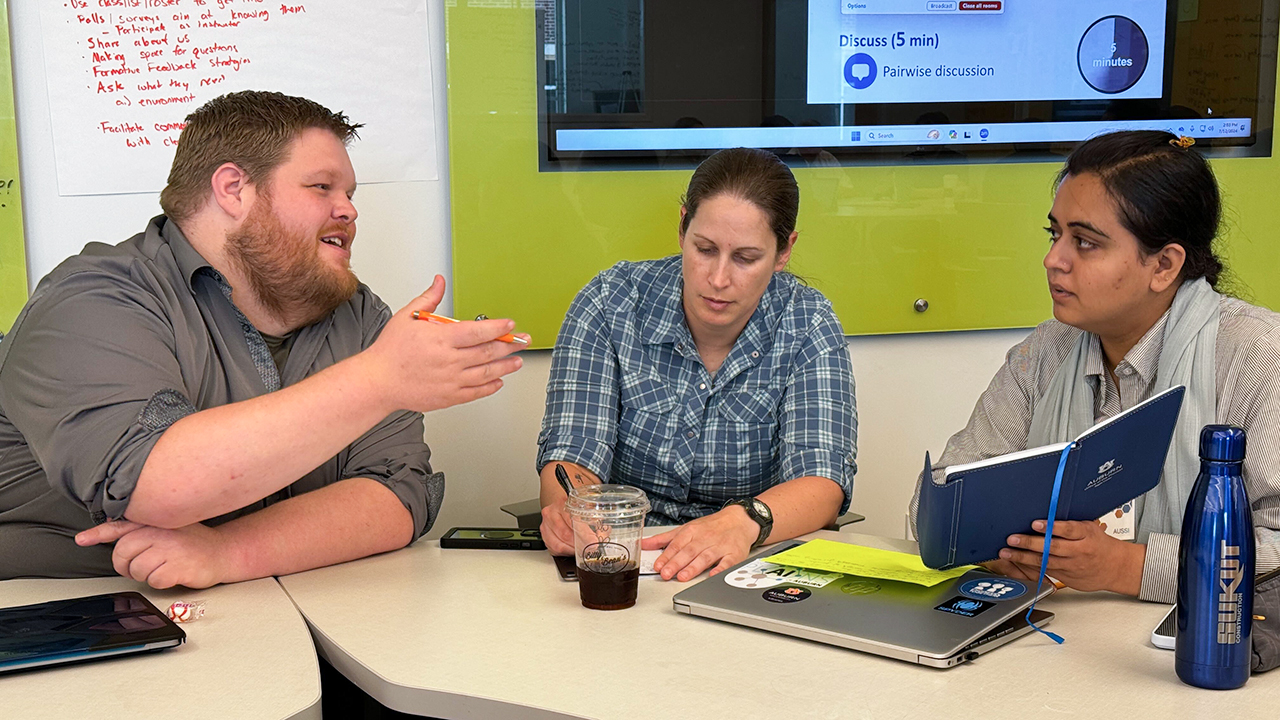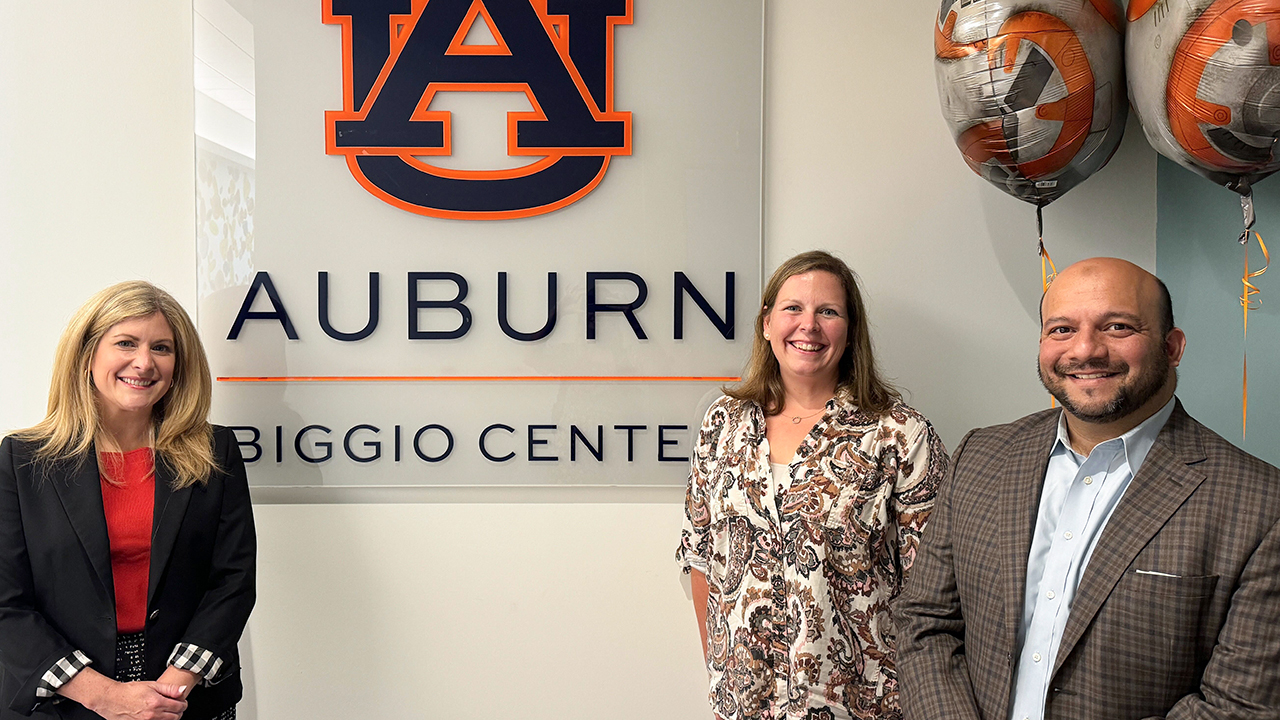content body
More than 50 faculty members from Auburn’s College of Sciences and Mathematics (COSAM) convened for the Auburn University Summer STEM Institute (AUSSI). Held in the Academic Classroom and Laboratory Complex (ACLC) in collaboration with The Biggio Center for the Enhancement of Teaching and Learning, the event concentrated on implementing student-centered learning strategies and integrating instructional technology to redesign course content. Building on Course (Re)Design (CRD) and the Mobile Science Institutes (MOSI), faculty, postdocs, lab coordinators and GTAs from COSAM restructured courses for Engaged Active Student Learning (EASL) classrooms.
The week-long AUSSI program, adapted from the National Institute for STEM Teaming (NIST), tackled the unique challenges of teaching STEM courses by equipping faculty with evidence-based strategies and fostering innovative and effective STEM education practices.
“I feel valued and included,” said Shobnom Ferdous, a senior lecturer in the Department of Biological Sciences. “This workshop provides me with the tools to rethink and redesign my course methodology and syllabus, as well as how I teach difficult content.”
Rachel Prado, lead facilitator and senior lecturer in chemistry and biochemistry and Biggio Faculty Fellow, emphasized the importance of access to resources and supportive discussions.
“What I love most about this workshop is its focus on science and scientific teaching,” said Prado. “This week, the faculty, grad students and staff were joyous, excited and engaged the entire time.”
A key aspect of the AUSSI program is uniting individuals from all areas of COSAM. Graduate students, teaching faculty and research-focused faculty alike engage in discussions on how to best support students. Collaborating throughout the week-long program in this way fosters a sense of community.
“The exchange of ideas and teaching methods transcends disciplinary boundaries,” said Melinda Lanius, an assistant professor in the Department of Mathematics and Statistics. “We have formed a community; it’s inspiring to see people meet for the first time, work hard together, and grow through feedback.”
This community-building extends to graduate students, providing a unique opportunity to enhance their skills. Working in groups helps to expand the understanding of concepts, emphasizing the creation of engaging courses with extensive comprehension.
Megan Mittelstadt, director of the University of Georgia Center for Teaching and Learning, delivered the closing keynote. She explored how instructors use active learning and addressed the challenges of defining and evaluating this approach. Mittelstadt shared strategies for preparing both students and instructors for active learning, setting clear expectations and managing student resistance. She also discussed how active learning can enhance student outcomes, improving understanding and critical thinking.
Overall, the AUSSI program created a space for scholars to learn.
“Weeks like these make me grateful for the joy, creativity and courage Auburn faculty bring to the classroom,” said Lindsay Doukopoulos, associate director for educational development at the Biggio Center.
AUSSI is part of a research collaboration between the Biggio Center and the College of Sciences and Mathematics, partially funded by a National Science Foundation IUSE grant called IDEALS (NSF grant #2236315). The PI is Stephanie Shepherd, Associate Professor in the Department of Geosciences, and Melinda Lanius and Lindsay Doukopoulos are co-PIs. The AUSSI workshop was co-lead by Stephanie Shepherd, Rachel Prado, and Lindsay Doukopoulos. Melinda Lanius is leading the research component of IDEALS.








